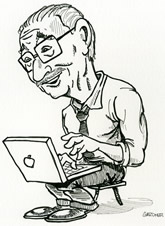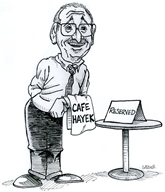Here’s a letter to a new correspondent.
Mr. __:
In response to the claim that tariffs cannot increase production in some domestic industries without drawing resources away from – and, hence, decreasing production in – other domestic industries, you ask:
Suppose we have unemployment? What are we “giving up” by employing people who, for example, have a lot of experience making baseball caps, but who are idle? That would seem that they’re not being productive (“away from other productive activities”).
The easy yet correct answer in the context of Trump’s tariffs is that America is not now beset by unemployment. Excluding the covid period (February 2020 through April 2023), the monthly unemployment rate averaged 4.0 percent from January 2017 through today (May 2025) – which is easily a full-employment rate, as today’s natural rate of unemployment is estimated to be around 4.6 percent.
Further, the “capacity utilization” rate in America’s manufacturing sector was, when Trump on April 2ndannounced his “Liberation Day” tariffs, virtually the same as its rate on the eve of the Great Recession: It was 77.16 percent in March 2025 and 78.95 percent in November 2007. Perhaps more importantly, the manufacturing-capacity-utilization rate in March 2025 was notably higher than its rate of 71.24 percent when China joined the WTO in December 2001.
There’s no evidence that America is filled with involuntarily idled resources and capacity.
But your question warrants a more fundamental answer – which is this: No good reason exists to suppose that tariffs are an effective means of reviving a depressed economy and putting idle resources to work. Even during severe downturns, restricting imports also restricts exports. U.S. tariffs reduce Americans’ demand for foreign currencies, causing the dollar-price of foreign currencies to fall – which means the foreign-currency prices of dollars to rise. Foreigners must pay more for dollars. Foreigners’ thus face higher costs of buying U.S. exports and of investing in the U.S.
If you doubt this theoretical point, recognize that the historical evidence is unkind to all theories that claim that a means of reviving a slumping economy is for government to engineer artificial price increases by restricting supplies, whether through protectionism (such as the Smoot-Hawley tariff) or through purely domestic efforts such as were made by FDR’s National Recovery Administration.
Involuntarily idled workers and resources are put to work and made productive when economies are freed from government restrictions, not when government substitutes its own notions of what expenditures are and aren’t allowed for the decisions of a free people.
Sincerely,
Donald J. Boudreaux
Professor of Economics
and
Martha and Nelson Getchell Chair for the Study of Free Market Capitalism at the Mercatus Center
George Mason University
Fairfax, VA 22030



